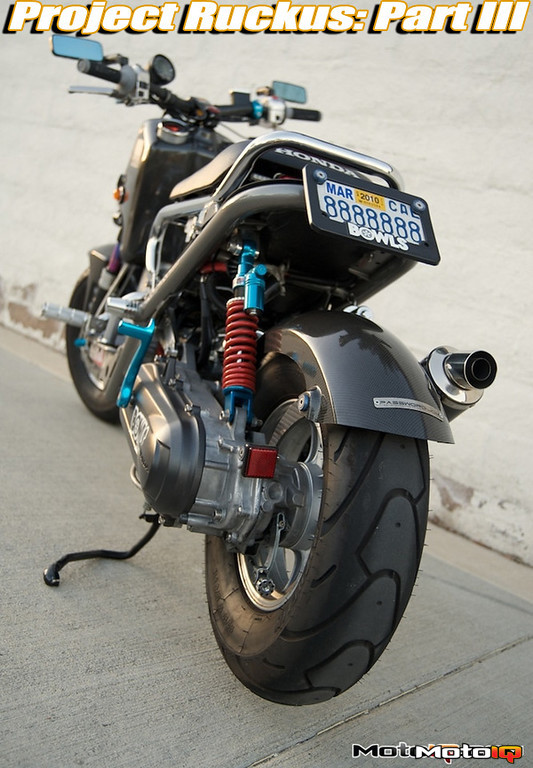
Project Honda Ruckus part 3, 50 mph or bust!
By Jeff Naeyaert
When we last left Project Honda Ruckus in part 2, our first performance mods which included a Yoshimura pipe and a Bowls PC20 big bore carburetor kit had increased the top speed of our Ruckus from a pathetic 37 mph stock to a more reasonable 45 mph. However this was not fast enough to safely cruise on the fast streets of Orange County. The acceleration to reach this top speed was pretty lame as well. We had to get more speed, for safety and to be able to smoke the snobby Vespa riders in our area that would turn up their noses at our little Honda.
 |
| The JDM Posh CDI box with high output coil raised our rev limit to 10,500 rpm while giving us a hotter spark and more aggressive advance curve to boot. This easy to install part is essential to get the maximum out of the stock engine. |
The first limit to our top speed was twofold; we were running out of gear and hitting our rev limiter. Our acceleration was hampered by several issues as well. We decided to address our top speed first. Bowls came to our aid by supplying us with a Posh CDI unit and coil. This ignition system not only gave us a hotter spark but bumped up or rev limit from the stock 8900 rpm to a much more respectable 10,500 rpm. The Posh ignition box also has a slightly faster advance curve. We also installed a Denso iridium plug at that time. The ignition system installed easily in a few minutes and bumped up our top speed to around 46-47 mph as we were no longer on the rev limit.
 |
| We installed a bigger K&N filter with a dust shield to get better flow. We had to up our main jet to an 80 to compensate for the increased air flow. |
Next we gave our engine a little more airflow by switching to a larger K&N air filter, also from Bowls. The bigger K&N also had a chrome shield, good for protecting the air filter from splash and dust kicked up by the wheel. The bigger, lower restriction air filter leaned out the motor slightly and we found a little more power by going to a larger 80 main jet. We were now able to hit 47 mph more consistently. At this time we removed the stock AIV system, blocking it off and using one of the big crankcase hoses as a crank case breather, putting a small breather filter from Bowls on it. Although many argue that the AIV system is important for engine longevity, we believe that this is simply not true and as long as the crankcase is vented freely so pressure will not build up; there will be no long term issues with engine durabilty.
 |
| The Polini variator has a larger diameter than stock yielding a higher top gear. The yellow rollers in the case are the soft, quick wearing rollers that came with the variator. We used the harder slicker and smoother, longer wearing brown and grey JDM Daytona rollers with better results. The variator back plate is the black thing with the three notches in it. |
With the rejetted carb and CDI, we had better power but we were revving past the power peak. To fix this, the next step in increasing our speed and acceleration was to add a Polini high performance variator also from Bowls. On a scooter the variator is part of the continually variable automatic transmission that controls the rate of upshifting. It is basically a pulley with internal ramps in which rollers sit that is bolted to the crankshaft. As the engine spins the variator faster and faster, centrifugal force causes the rollers to fling outward and roll up the ramps pushing on a solidly mounted plate called the back plate. Since the back plate can’t move, the pulley is forced by the rollers to move outwards which forces the drive belt to ride higher on the pulley, thus upshifting the transmission.


